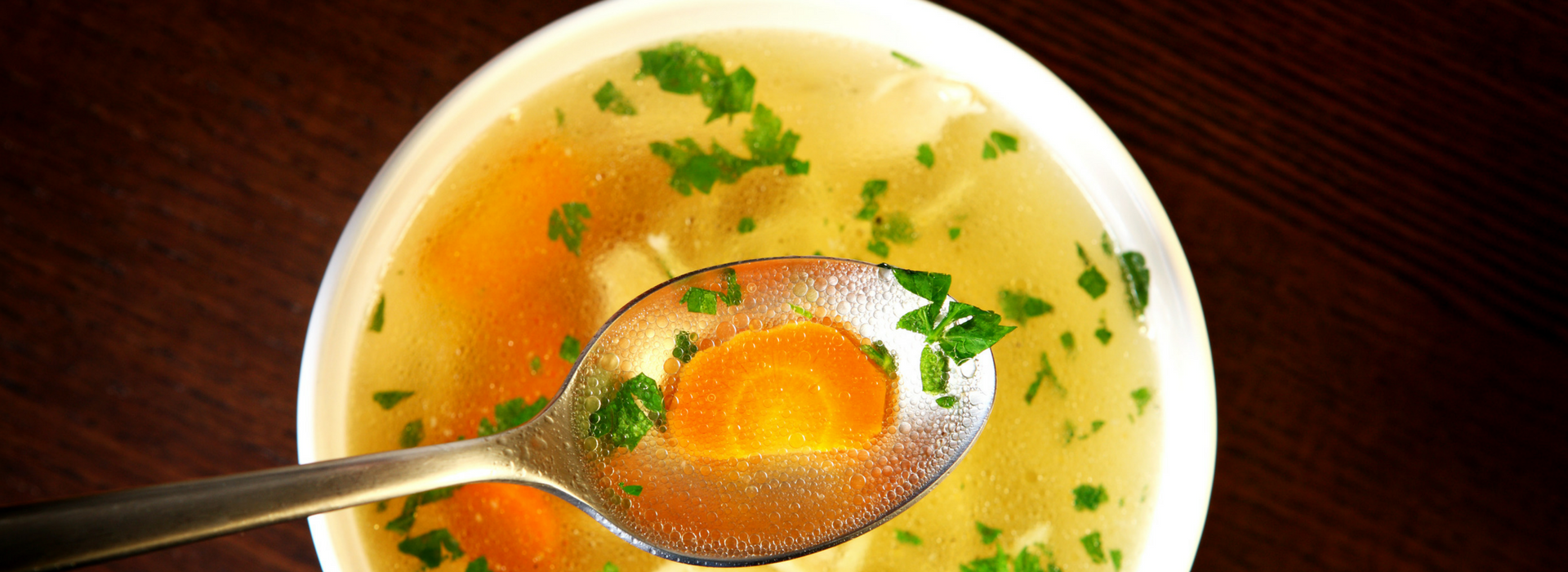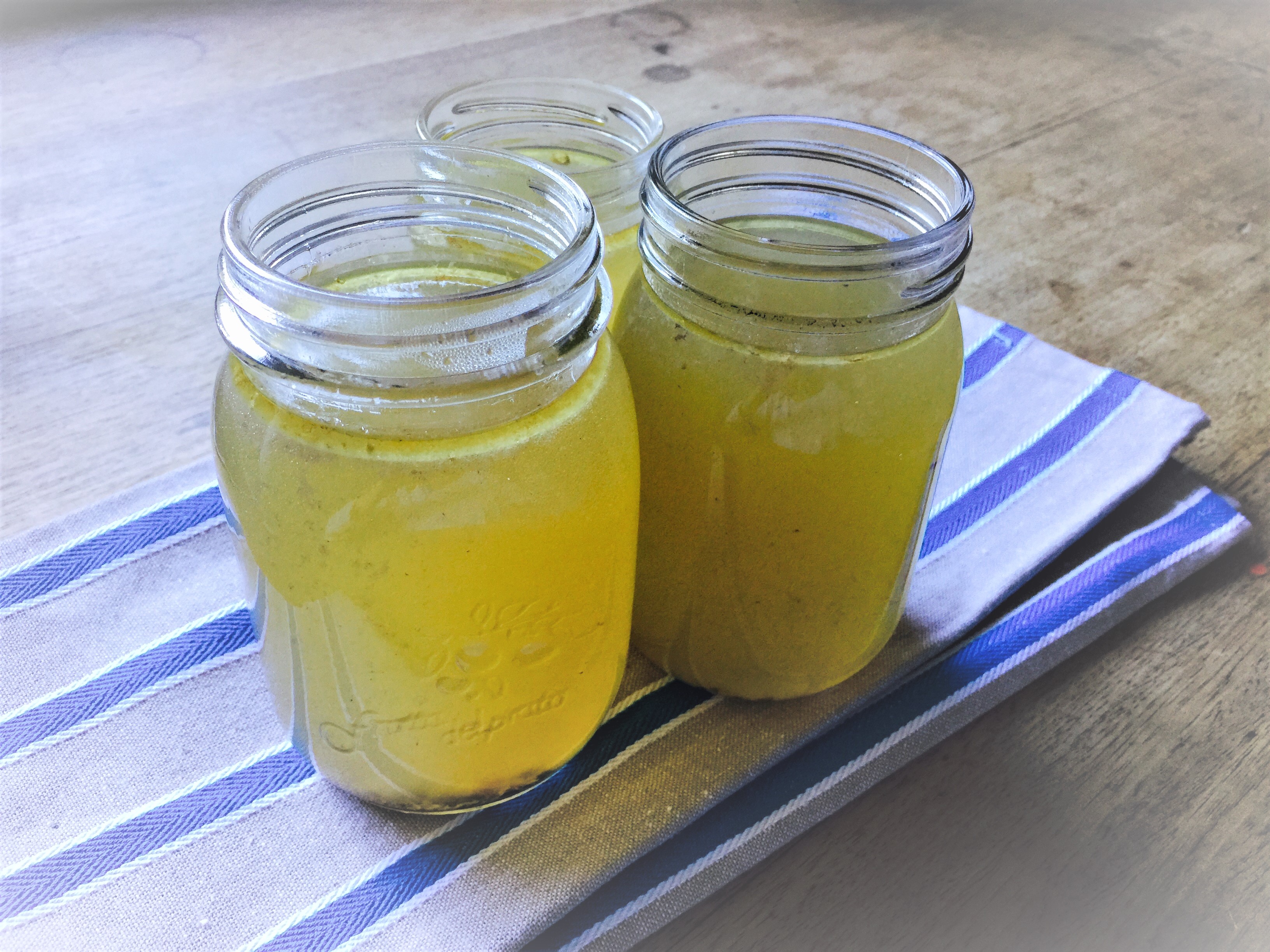Making and consuming bone broth is becoming more and more popular lately, however the act of using bones and off-cuts to make stock is an old tradition.
Due to its healing effect on the gut, bone broth features heavily in the GAPS diet created by Dr Natasha Campbell-McBride. Taking care of our gut also has an effect on immunity, this is because around 70-80% of the our immune tissue is found in the digestive system.
Early Greek and Egyptian physicians were known to recommend chicken soup to treat colds and flu, and more recently researchers have found that chicken soup (broth) may ease the symptoms of upper respiratory tract infections.
Bone broth is a rich source of amino acids, particularly proline, arginine, glycine, alanine and glutamine. It provides essential minerals such as calcium, magnesium, phosphorus, potassium and zinc and nutrients such as chondroitin and glucosamine. Bone broth is also a great source of gelatin, which results when collagen and connective tissue denature or break down during the cooking process.
In summary, some of the roles of the nutrients in bone broth:
- Alanine plays a role glucose regulation and the adrenal gland function. It helps produce lymphocytes, an important part of the immune system.
- Proline keeps muscle and joints flexible and promotes healthy skin, particularly when consumed with vitamin C.
- Glycine supports bile synthesis and digestion. It also has a role in supporting the nervous system and has been found to improve sleep and fatigue.
- Proline and glycine are major components of collagen.
- Glycine, proline, and arginine all have anti-inflammatory effects.
- Glutamine improves gut barrier function and immune function.
- Calcium, magnesium and phosphorus are required for skeletal and cardiovascular health.
- Chondroitin and glucosamine are part of normal cartilage and may help with osteoarthritis and joint pain.
- Gelatain is shown to exert an anti-inflammatory effect on the digestive tract.
- Gelatin is also thought to promote healthy hair, nails and skin.
Bone Broth Recipe
Ingredients
- 1 kg raw organic bones – chicken, beef or lamb
- 4 litres filtered water
- 2 tbsp apple cider vinegar
- 1/2 tbsp sea salt
- cracked pepper
- 3-4 bay leaves
- 3 cloves garlic, peeled
Method
Pre-heat oven to 180 Celsius. Place bones in dish and roast for 30 minutes to bring out the flavours.
Combine all ingredients in slow cooker and cook on low for 12-24 hours. Chicken bones generally need 12 hours where lamb and beef take up to 24 hours.
Strain through a colander, discard the bones and store is glass containers in the refrigerator or freezer.
If you don’t have a slow cooker, you can use the same method on the stove top. Be sure to simmer on a very low heat when using his method.
Cooking notes
- Broth will last several months when frozen, or kept in the refrigerator for about 5 days.
- A sign of great broth is a gel like consistency after refrigeration. This indicates a high level of gelatin. If you find your broth doesn’t gel, try adding more connective tissue. Cuts such as, chicken feet, whole carcasses, skin, joint knuckles, tendons and fish heads all work well.
- Source organic bones. This is particularly important when making chicken broth. Organic butchers generally have a good supply of stock bones and sell chicken carcasses.
- I use 2 organic chicken carcasses along with 2 legs (skin on) to make my chicken both and it gels each time.
Suggested Uses
- Soup – Poach chicken breast or thigh in broth, add herbs, vegetables, beans / legumes, grains and simmer.
- Make gravy to put on vegetables or meat.
- Sip broth on it own as a warm drink. In many countries seasoned broth is traditionally consumed as an apéritif before meals to stimulate digestion.
- Use broth instead of water to cook rice or quinoa by absorption method.
Reference List
Osiecki, H. 2014, The Nutrient Bible 9th Edition, Bio Concepts Publishing

